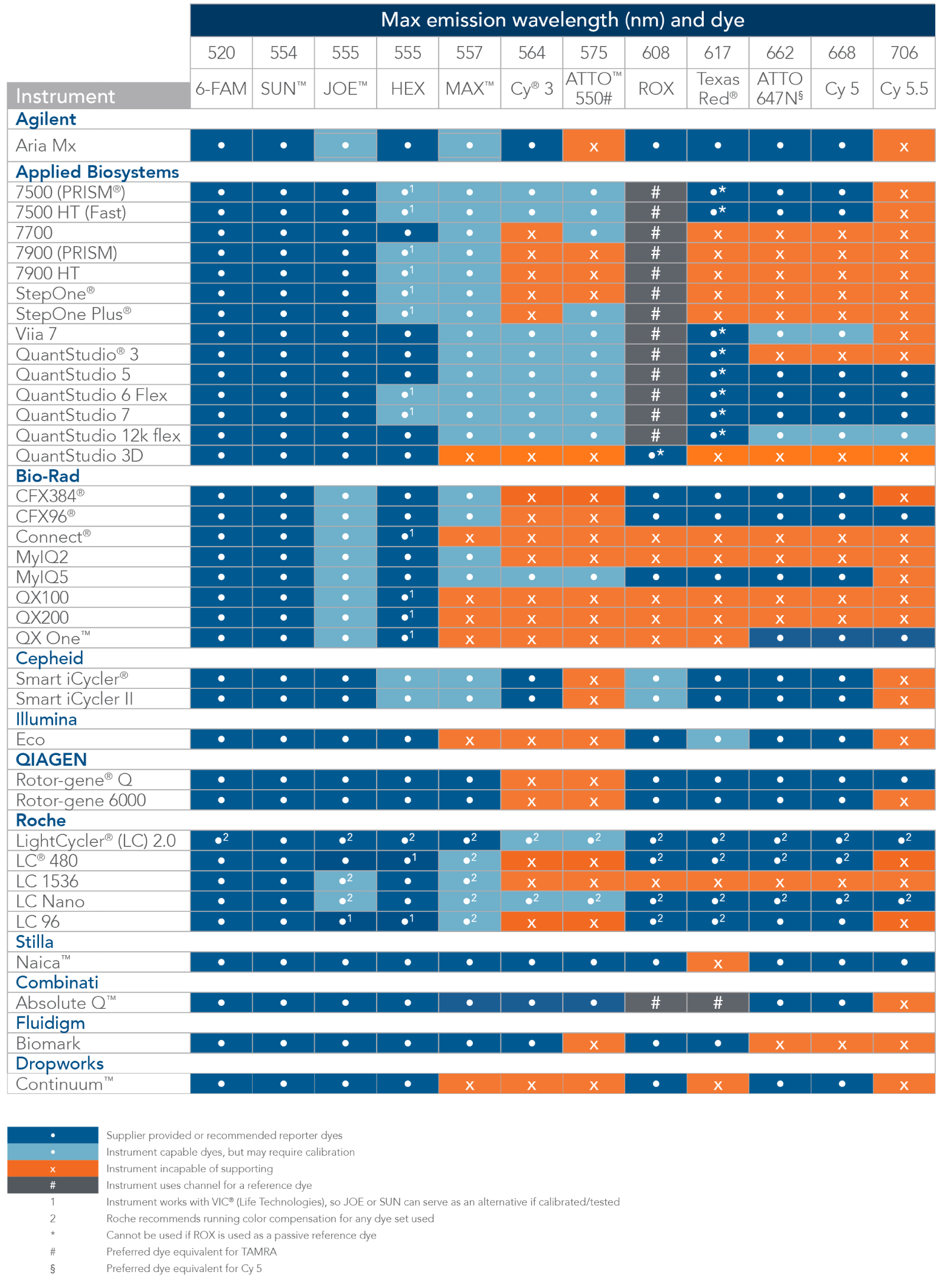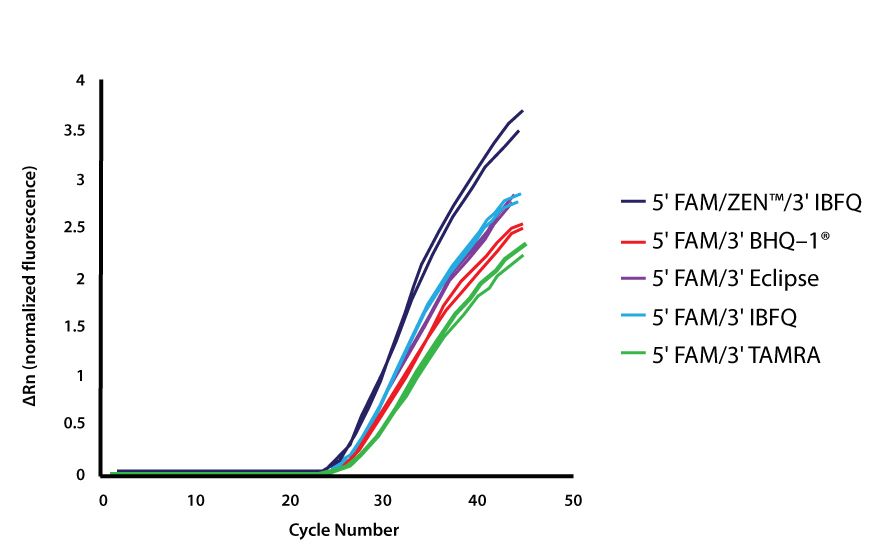You may be new to qPCR and uncertain about which probe dyes are compatible with the qPCR instrument in your laboratory, or maybe you are designing probes for your assays and have questions about quencher options. Here we provide some advice on how to select appropriate dyes and quenchers for your probe-based qPCR assays.
Reporter dyes
Instrument compatibility
Selecting an appropriate reporter dye for qPCR analysis will depend on the type of instrument you are using and the compatibility of the dye with the instrument. Refer to your instrument manufacturer's guidelines for information specific to your particular instrument.
Figure 1 provides a list of reporter dyes compatible with common instrumentation. FAM is the most popular of these dyes and is compatible with all commercial qPCR instrumentation.
 Cy is a registered trademark of Cytiva. ATTO is a trademark of ATTO-TEC GmbH. JOE dye is trademark of Thermo Fisher Scientific. Texas Red is a registered trademark of Molecular Probes/Life Technologies.
Cy is a registered trademark of Cytiva. ATTO is a trademark of ATTO-TEC GmbH. JOE dye is trademark of Thermo Fisher Scientific. Texas Red is a registered trademark of Molecular Probes/Life Technologies.
Multiplexing
For multiplexing applications, each target must be identified by a separate reporter dye. Select reporter dyes with the least amount of spectral overlap. Figure 2 provides the emission wavelengths for a variety of popular dyes. It also indicates the recommended quenchers that can be used with those dyes. As a general rule, select a dye with a strong signal, such as FAM, for any low copy transcripts. Lower signal fluorophores can then be used for the more abundant transcripts.

Quenchers
Traditional dark quenchers absorb broadly and emit the absorbed energy as heat and not light, which allows use of multiple reporter dyes with the same quencher (Figure 2). This characteristic allows for expanded options for multiplex assays. Dark quenchers reduce signal cross-talk, making them compatible with a broad range of image analysis instruments.
Examples of dark quenchers include Iowa Black FQ and RQ.
IDT has developed the internal ZEN and TAO™ Quencher, which are also dark quenchers. They can be used in addition to the 3’ quencher Iowa Black FQ, resulting in double-quenched probes (5’FAM/ZEN/3’IBFQ; Figure 3). Other dark quenchers are the Black Hole Quencher series (LGC Biosearch Technologies).
These double-quenched probes generate less background and increased signal compared to probes containing a single quencher (Figure 4). See our PrimeTime™ qPCR Probes page for more information.

IDT supplies commonly used dark quenchers as well as the proprietary dark quenchers, Iowa Black FQ, Iowa Black RQ, and the internal ZEN Quencher. TAMRA is also a quencher option for a FAM reporter dye.
More questions? We can help. Contact us for assistance with your qPCR project.
For research use only. Not for use in diagnostic procedures. Unless otherwise agreed to in writing, IDT does not intend these products to be used in clinical applications and does not warrant their fitness or suitability for any clinical diagnostic use. Purchaser is solely responsible for all decisions regarding the use of these products and any associated regulatory or legal obligations. RUO22-1576_001


